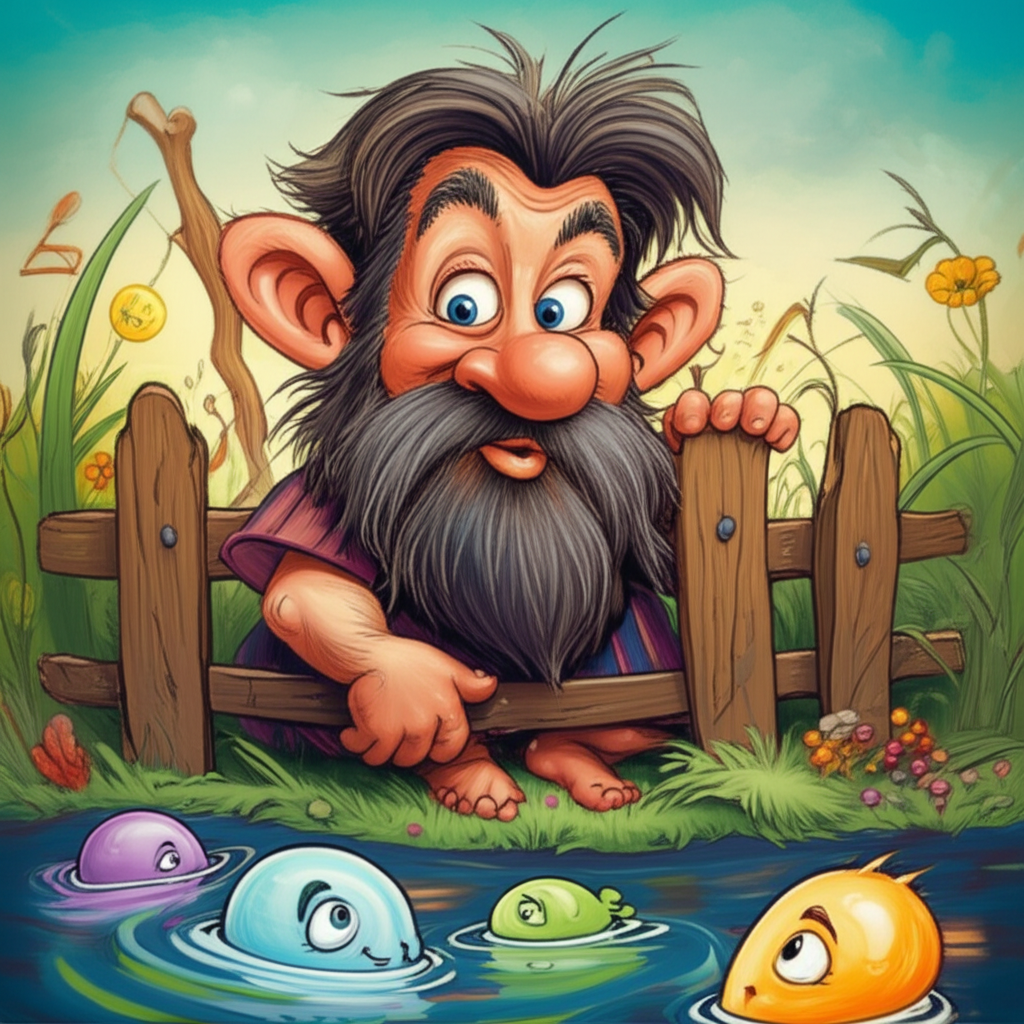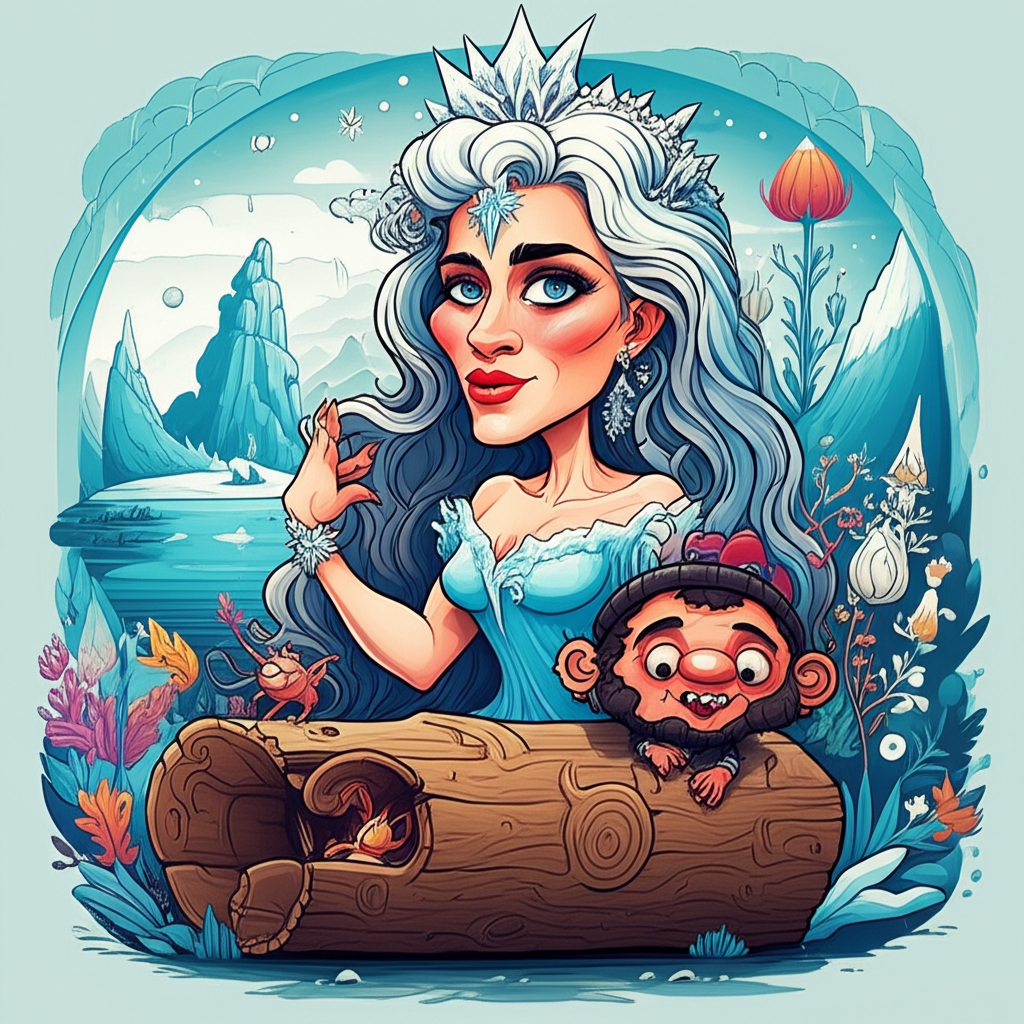
The tapestry of human civilization is richly woven with threads of stories, myths, and legends that sought to explain the inexplicable, to soothe fears, and to define the very fabric of existence. Among these, the ancient Slavic peoples, inhabiting the vast plains and dense forests of Eastern Europe, developed a vibrant folklore that spoke of spirits inhabiting every corner of their world. One such deeply ingrained narrative, passed down through generations, involves the enigmatic Domovoi and a fascinating conceptual journey that we might term the "River of Souls." This article delves into this traditional story, not as a claim of truth, but as a window into the cultural imagination of an ancient people.
Origins and Cultural Background
To truly appreciate the myth of the Domovoi and the River of Souls, one must first understand the cultural milieu in which it flourished. Before the advent of Christianity, the early Slavic societies were largely agrarian, their lives intimately tethered to the rhythms of nature. Harsh winters, bountiful harvests, and the constant presence of dense, often foreboding forests shaped their worldview. Life was communal, centered around the family hearth, which was not merely a source of warmth but the very heart of the home.
In this era, the world was perceived as teeming with unseen forces. Animism was prevalent, a belief that spirits inhabited natural objects, animals, and even human-made structures. The line between the physical and spiritual realms was permeable, and respect for these unseen entities was paramount for survival and prosperity. Every rustle in the leaves, every creak of the floorboards, every inexplicable occurrence was attributed to a spirit – benevolent if appeased, malevolent if offended. This profound connection to their immediate environment fostered a deep spiritual reverence for the home, making it a sacred space protected by its own unique guardian.
The Guardian of the Hearth: Domovoi
At the heart of Slavic domestic folklore stands the Domovoi (plural: Domovye), the benevolent house spirit. This figure is not a deity to be worshipped, but rather a guardian, a silent partner in the running of the household. Traditionally, a Domovoi is described as a small, often elderly man, sometimes covered in hair, with glowing eyes, who can also appear in the guise of a family pet, like a cat or dog, or even as a simple shadow or a gust of wind. His primary dwelling place is often near the stove, under the threshold, or in the attic – the warmest, most central, or liminal spaces of the home.
The Domovoi’s symbolic attributes are rooted in the very essence of home and family. He embodies protection, domestic order, and the continuity of the family line. If treated with respect – perhaps with a small offering of milk or bread left by the stove – he would ensure the household ran smoothly, warn of impending danger (like a fire or a visitor with ill intent), and even help with chores. However, if angered or neglected, he could become mischievous, hiding objects, breaking dishes, or causing minor calamities. He was a presence that represented the ancestral spirit, the silent keeper of the family’s legacy and comfort, forever bound to the home’s walls and the lives within them.
The Whispering Current: A Narrative of Domovoi and the River of Souls
In the heart of a vast, ancient forest, nestled beside a winding river, stood a small wooden izba, home to the elderly Babushka Anya and her quiet grandson, young Misha. Within its walls, unseen by mortal eyes, resided a venerable Domovoi named Zhivko. For generations, Zhivko had watched over Anya’s family, a silent presence in the creaking timbers and the warmth of the hearth. He ensured the bread rose, the milk didn’t sour too quickly, and the mice kept to their rightful corners.
One bitter winter, a heavy quiet descended upon the izba. Babushka Anya, her spirit as ancient and weathered as the forest itself, began to fade. Misha, though young, understood the gravity of the shift. Zhivko, the Domovoi, felt it too – a profound loosening of the bonds that tied Anya’s spirit to the physical realm. His duty was to the living, to the hearth and home, but he also sensed a new, solemn task approaching.
As Anya’s last breath mingled with the frosty air of the izba, a shimmering, ethereal essence, her soul, lingered. It hovered near the hearth, reluctant to depart, perhaps due to the weight of memories, or the fear of the unknown journey. The ancient Slavs spoke of the River of Souls, a mystical current that flowed through the liminal spaces between life and what lay beyond. It was not a physical river, but a spiritual conduit, veiled in mist and ancient whispers, meant to guide the departed to their ancestral resting places or the great spiritual fields. Yet, sometimes, a soul might hesitate, confused or tethered by earthly attachments.
Zhivko, the steadfast Domovoi, though bound to the home, felt an extraordinary surge of purpose. He could not physically leave the izba, but his spiritual essence, amplified by generations of devotion, could extend. He manifested, not as his usual hairy old man, but as a faint, luminous outline of himself, his eyes glowing with a gentle, ancient light. He moved towards Anya’s lingering soul, a soft hum emanating from his spectral form.
"Fear not, beloved Babushka," Zhivko’s presence seemed to whisper, a feeling rather than a sound. "The path awaits. Your loved ones, those who have gone before, gather on the other bank."
With a silent, guiding gesture, Zhivko enveloped Anya’s ethereal form, not to hold it back, but to steady it. He began to project a path, a shimmering thread of light extending from the threshold of the izba, through the snow-laden forest, towards the very river that flowed nearby – not that river, but its spiritual counterpart.
Misha, sleeping fitfully, might have stirred, sensing a momentary warmth that had nothing to do with the dying embers. Outside, the night was still, but Zhivko and Anya’s soul were traversing a different landscape. The River of Souls, to Zhivko’s perception, appeared as a wide, mist-shrouded current, its surface reflecting starlight and ancient wisdom. On its banks, spectral figures of ancestors, barely visible, seemed to beckon.
Zhivko, with gentle persistence, guided Anya’s soul along the luminous thread. He showed her the warmth of her memories, the love she had given, the life she had lived. He eased her fears, reminding her of the natural order, of the endless cycle. Slowly, hesitantly at first, then with a growing sense of peace, Anya’s soul began to drift towards the whispering current. Zhivko, a beacon of domestic love, ensured her passage was not one of terror, but of tranquil transition.
As Anya’s soul merged with the River of Souls, becoming one with its gentle flow and the welcoming figures on the distant bank, Zhivko felt a quiet satisfaction. His duty, though far beyond the usual creaks and chores, was fulfilled. The spiritual thread retracted, and his luminous form solidified back into the familiar, unseen presence by the hearth. The izba was quieter now, a new chapter begun, but the Domovoi remained, a timeless guardian, forever watching over the home and the profound journeys of the souls within it.
Symbolism and Meaning
This evocative narrative, whether told explicitly or implied through various Slavic tales, offered profound meaning to ancient people. The Domovoi, typically bound to the home, undertaking such a journey or playing such a role in the passage of a soul, symbolized the deep-seated belief that the home and its guardians were not just about physical safety, but spiritual well-being. It offered solace in the face of death, transforming a terrifying unknown into a guided journey, cared for by a familiar, benevolent spirit.
The River of Souls itself represented the ultimate boundary, the great mystery of what lay beyond. By having a known, respected entity like the Domovoi involved in guiding a soul, the myth provided a sense of order and comfort in a chaotic world. It suggested that even in death, one was not truly alone, and that the bonds of family and home extended beyond the veil of life. This myth reinforced the sacredness of the home, the importance of honoring ancestors, and the interconnectedness of the living, the dead, and the spiritual guardians that watched over them all. It offered a narrative to confront the fear of the unknown and the profound sorrow of loss.
Modern Perspective
Today, the tales of the Domovoi and the broader Slavic pantheon continue to resonate, not as objects of belief, but as rich cultural artifacts. These myths are explored in academic studies of folklore, anthropology, and history, offering invaluable insights into the pre-Christian worldview of the Slavic peoples. Beyond academia, they have permeated popular culture, inspiring authors, filmmakers, and game developers.
Characters reminiscent of the Domovoi appear in fantasy literature, often as quirky, protective house spirits, while the concept of a "River of Souls" or a similar ethereal passage to the afterlife is a common trope in various forms of media, from video games like The Witcher series (which draws heavily from Slavic folklore) to animated films and contemporary fantasy novels. These modern interpretations celebrate the imaginative depth of these ancient stories, highlighting their ability to enrich our understanding of diverse cultural heritages and to provide archetypal narratives that still speak to the human condition – our hopes, fears, and our eternal quest for meaning.
Conclusion
The story of the Domovoi and the River of Souls stands as a testament to the enduring power of human imagination and the ancient desire to comprehend the mysteries of life and death. It is a beautiful, intricate piece of Slavic cultural heritage, a traditional narrative crafted by ancient peoples to explain their world and their place within it. It is crucial to remember that this, like all myths and legends, is a product of human storytelling, born from cultural context and imaginative thought. As Muslims, we recognize that only Allah (SWT) is the true Creator and Sustainer of all existence, the One who holds ultimate power over life and death, and to whom all souls shall ultimately return. These cultural stories, while fascinating and rich in historical and educational value, are not meant to be believed as truth, worshipped, or practiced. Instead, they serve as a window into the past, allowing us to appreciate the vast tapestry of human creativity and the enduring legacy of storytelling across civilizations.





